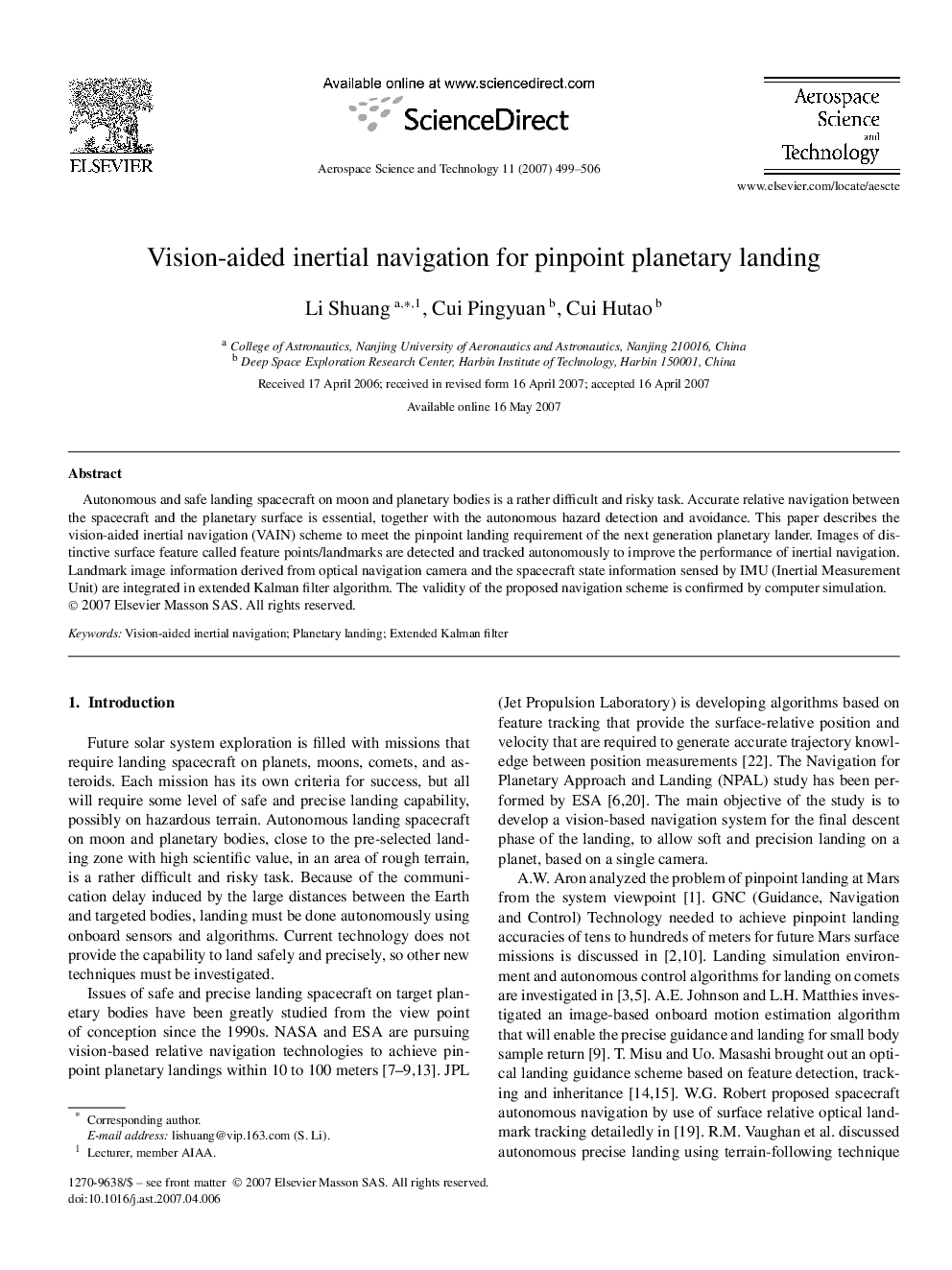| Article ID | Journal | Published Year | Pages | File Type |
|---|---|---|---|---|
| 1718702 | Aerospace Science and Technology | 2007 | 8 Pages |
Autonomous and safe landing spacecraft on moon and planetary bodies is a rather difficult and risky task. Accurate relative navigation between the spacecraft and the planetary surface is essential, together with the autonomous hazard detection and avoidance. This paper describes the vision-aided inertial navigation (VAIN) scheme to meet the pinpoint landing requirement of the next generation planetary lander. Images of distinctive surface feature called feature points/landmarks are detected and tracked autonomously to improve the performance of inertial navigation. Landmark image information derived from optical navigation camera and the spacecraft state information sensed by IMU (Inertial Measurement Unit) are integrated in extended Kalman filter algorithm. The validity of the proposed navigation scheme is confirmed by computer simulation.
